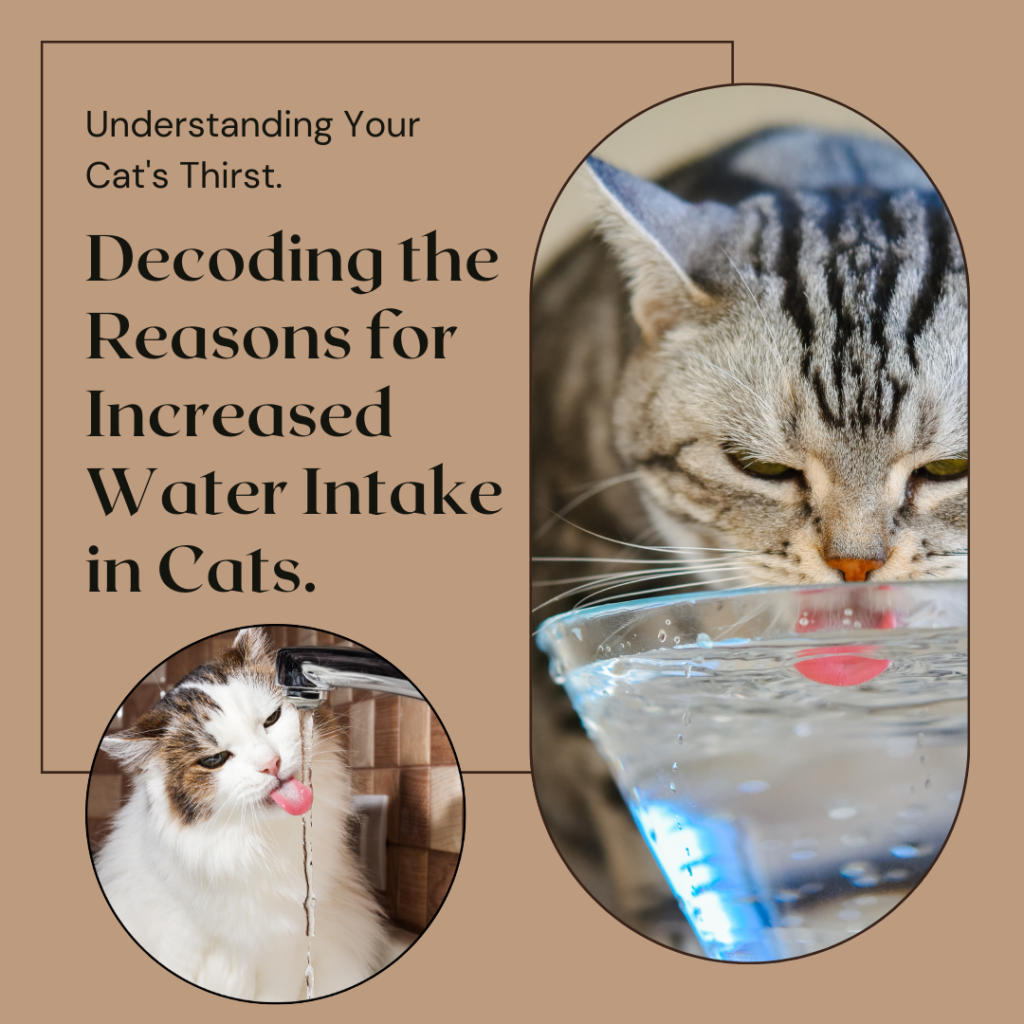Unraveling the Mystery: Reasons Behind a Cat’s Increased Water Consumption
Cats, known for their independent and sometimes mysterious nature, can leave their owners perplexed when behaviors shift unexpectedly. One such behavior that might raise concerns is a sudden and significant increase in water consumption. While occasional variations in water intake are normal, a dramatic and persistent change could signal an underlying issue. Let’s explore some common reasons why a cat’s water consumption may increase dramatically:
- Medical Conditions:
Various medical conditions can contribute to increased thirst in cats, including diabetes mellitus, kidney disease, hyperthyroidism, and urinary tract infections. If a cat consistently drinks large amounts of water, it’s essential to consult a veterinarian to rule out potential health issues. - Diabetes Mellitus:
Cats with diabetes may exhibit polydipsia, a condition characterized by excessive thirst. In diabetes, the body’s inability to regulate blood sugar levels prompts the kidneys to work overtime to eliminate excess glucose through urine. This process leads to dehydration, triggering increased thirst to compensate for fluid loss. - Kidney Disease:
Chronic kidney disease (CKD) is common in older cats and can result in increased water consumption. As the kidneys lose their ability to concentrate urine efficiently, the cat may drink more water to flush out waste products from the body. - Hyperthyroidism:
Hyperthyroidism, an overactive thyroid gland, can lead to heightened thirst in cats. The increased metabolic rate associated with this condition may cause dehydration, prompting the cat to seek more water to maintain fluid balance. - Urinary Tract Infections:
Infections in the urinary tract can cause discomfort and irritation, leading to increased thirst as the cat tries to flush out the urinary system. Increased water consumption can be an early sign of a urinary tract issue. - Dietary Changes:
Changes in diet, especially if transitioning to a dry food diet, can contribute to increased water intake. Cats on dry diets may instinctively seek more water to compensate for the lower moisture content in their food. - Stress or Anxiety:
Cats may react to stress or anxiety by altering their drinking habits. Changes in the household, introduction of new pets, or relocation can lead to heightened stress levels, affecting a cat’s behavior, including water consumption. - Environmental Factors:
External factors such as warmer weather or increased physical activity may naturally lead to a temporary rise in water intake. Observing whether the change aligns with environmental conditions can help differentiate between normal and concerning behavior. - Medication Side Effects:
Certain medications may cause increased thirst as a side effect. If a cat has recently started a new medication, it’s worth exploring whether this could be influencing their water consumption. - Age-Related Changes:
As cats age, they may experience changes in their bodies and health. Senior cats, in particular, may develop conditions that impact their water intake, highlighting the importance of regular veterinary check-ups.
While occasional fluctuations in water consumption are normal, a dramatic and persistent increase should prompt investigation, especially considering potential underlying health issues. Observant cat owners play a crucial role in recognizing changes in behavior and seeking prompt veterinary attention when needed. Consulting a veterinarian and addressing the root cause can ensure that a cat’s well-being is safeguarded, promoting a healthy and happy feline companion.



